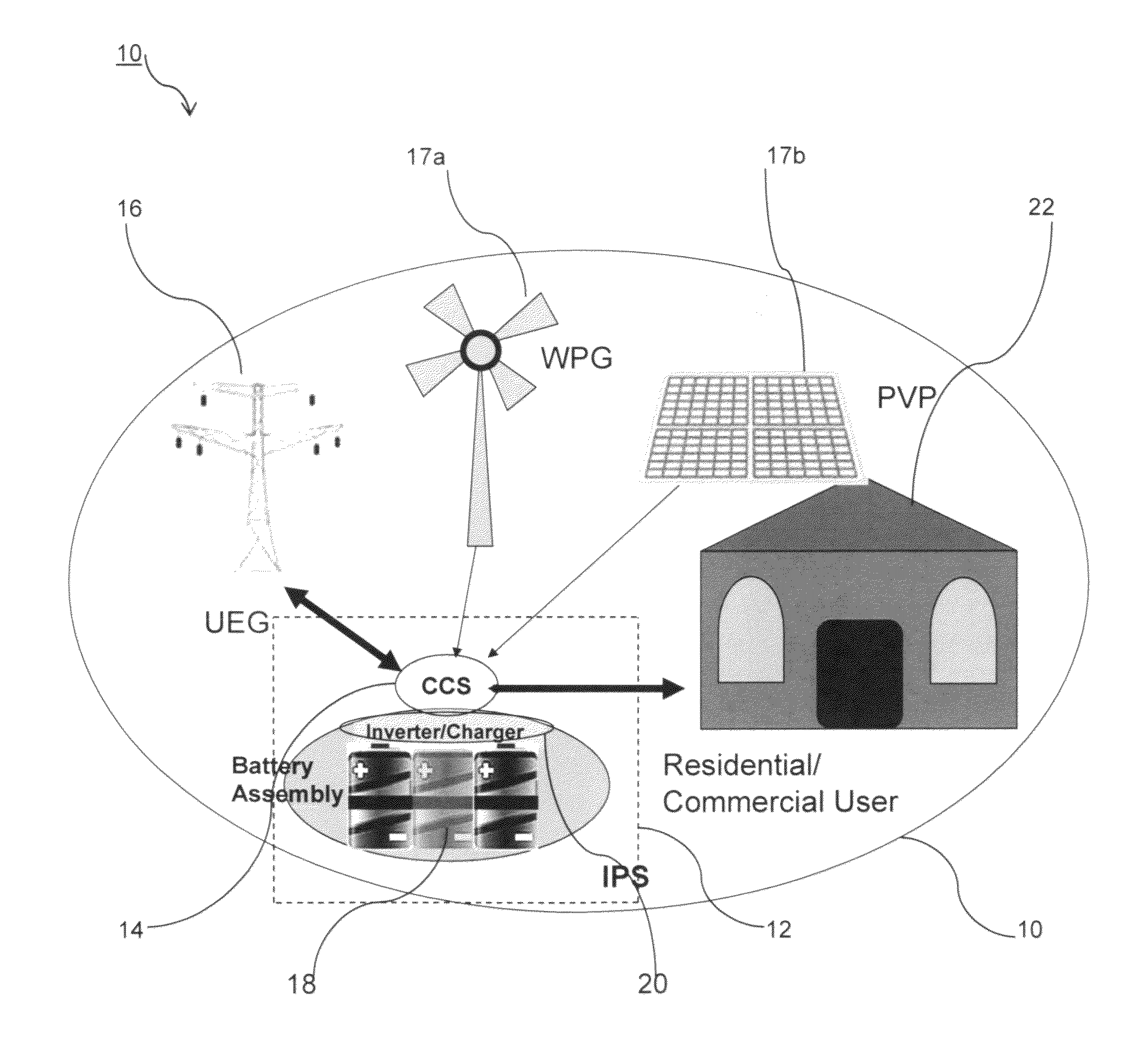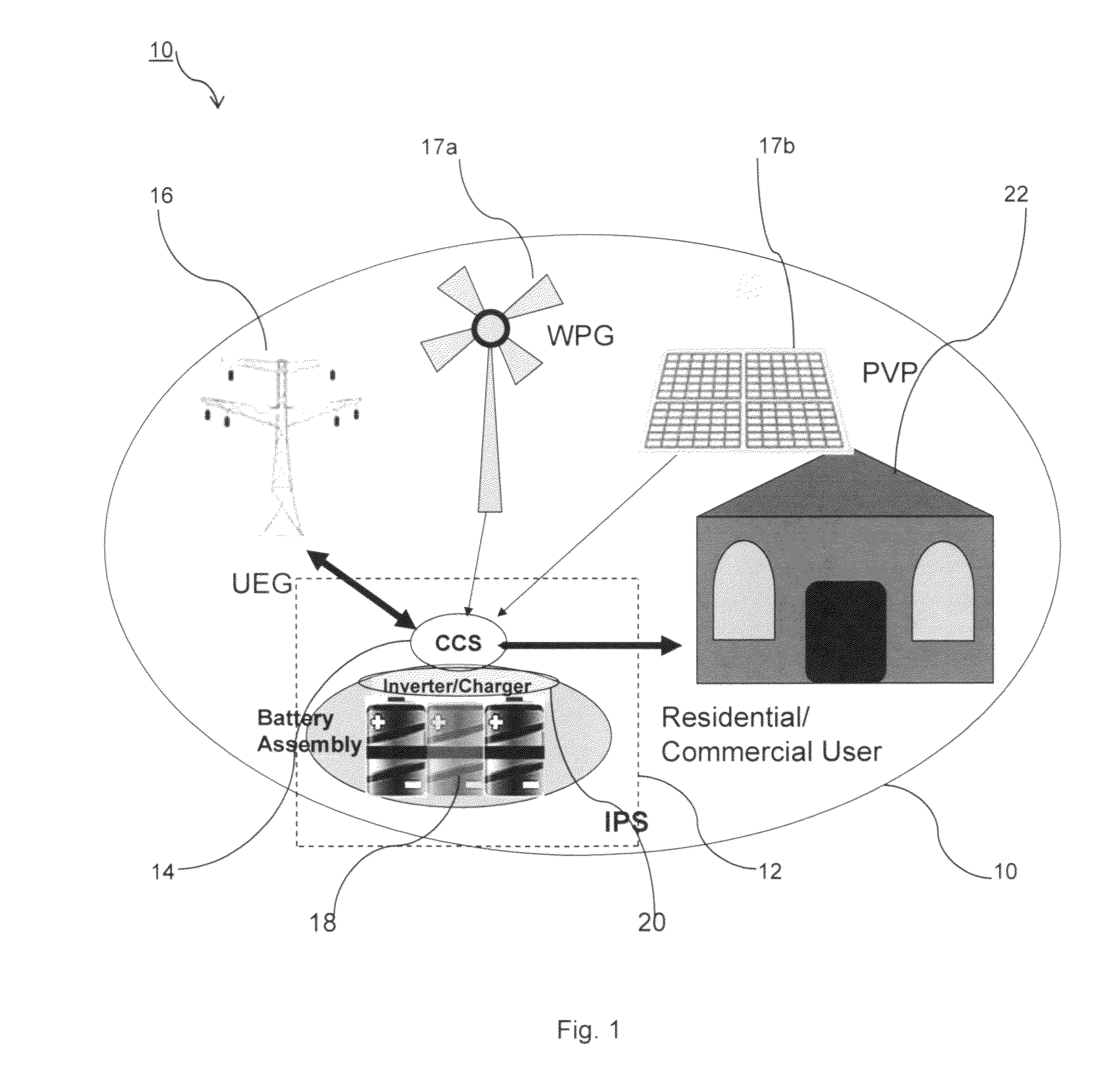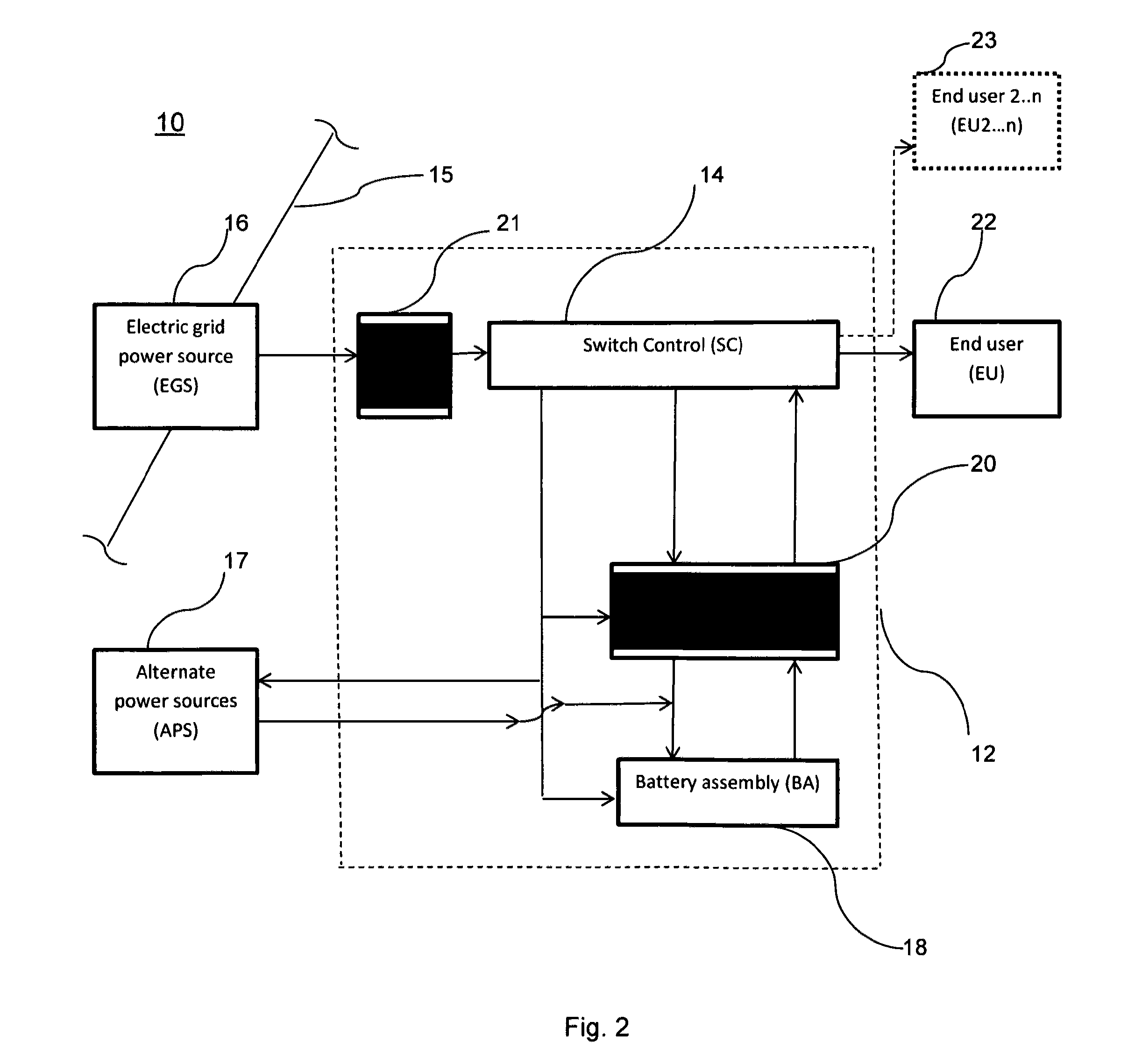Method and apparatus for integrated electric power generation, storage and supply distributed and networked at the same time
a technology of integrated electric power generation and storage, applied in the direction of battery/fuel cell control arrangement, emergency power supply arrangement, greenhouse gas reduction, etc., can solve the problems of affecting the performance and safety of vehicles, the loss of 20% of the battery performance level, and the general degradation of electric car batteries. , to achieve the effect of cost saving, less vulnerable and cost effectiv
- Summary
- Abstract
- Description
- Claims
- Application Information
AI Technical Summary
Benefits of technology
Problems solved by technology
Method used
Image
Examples
Embodiment Construction
[0039]Embodiments of the present disclosure will be described in detail with reference to the drawings. In the drawings, parts that are the same or correspond to each other have been given the same reference signs, and redundant descriptions thereof will not be given.
[0040]Electric car batteries at the end of their automotive life can still have about 70 to 80% of their charging capacity when new. Unlike a battery's use in vehicles where conditions are fairly demanding with rapid discharging and charging, a residential / commercial use of the same battery gives the battery a “second life” once its automotive application is finished. Use of “recycled” batteries also favorably adds to the cost / benefit of the system of the disclosure. The stored energy will meet full energy needs for days and when it is not in use, and can be preserved, nominally for up to a month, while also being available to meet any emergency back-up power situation.
[0041]Referring now to FIGS. 1 and 2, FIG. 1 is a p...
PUM
 Login to View More
Login to View More Abstract
Description
Claims
Application Information
 Login to View More
Login to View More - R&D
- Intellectual Property
- Life Sciences
- Materials
- Tech Scout
- Unparalleled Data Quality
- Higher Quality Content
- 60% Fewer Hallucinations
Browse by: Latest US Patents, China's latest patents, Technical Efficacy Thesaurus, Application Domain, Technology Topic, Popular Technical Reports.
© 2025 PatSnap. All rights reserved.Legal|Privacy policy|Modern Slavery Act Transparency Statement|Sitemap|About US| Contact US: help@patsnap.com



